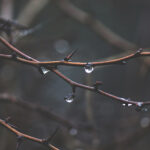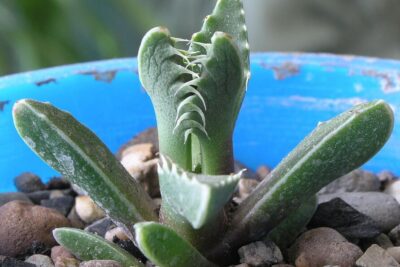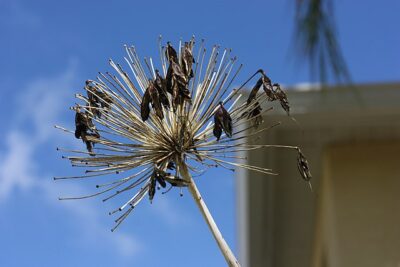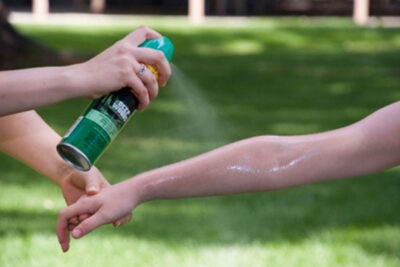
Causes of Holes in Succulent Leaves: A Comprehensive Guide

Succulents are a popular choice of plants for both indoor and outdoor gardens due to their unique and visually appealing appearance. However, one common issue that succulent owners often encounter is the presence of holes in the leaves. These holes can range in size and shape, and can be caused by various factors. Understanding the causes of holes in succulent leaves is essential for proper care and maintenance of these plants.
In this comprehensive guide, we will delve into the various reasons behind the formation of holes in succulent leaves. We will explore both natural causes, such as pest infestations and physical damage, as well as environmental factors like excessive sunlight or improper watering. Additionally, we will provide practical tips and techniques to prevent and treat holes in succulent leaves, ensuring that your precious plants remain healthy and vibrant. Whether you are a seasoned succulent enthusiast or a beginner, this article will equip you with the knowledge to keep your succulents thriving and hole-free.
- Overwatering is a common cause of holes in succulent leaves
- Pests, such as mealybugs or snails, can also create holes in succulent leaves
- Disease or fungal infections can cause holes in succulent leaves
- Sunburn or excessive sun exposure can lead to holes in succulent leaves
- Physical damage, such as accidental bumps or cuts, can result in holes in succulent leaves
- Nutritional deficiencies or imbalances can contribute to the formation of holes in succulent leaves
- Succulent leaves can develop holes if they are overwatered
- Pests, like mealybugs or snails, can create holes in succulent leaves
- Holes in succulent leaves can be caused by disease or fungal infections
- Excessive sun exposure or sunburn can lead to holes in succulent leaves
- Accidental bumps or cuts can result in holes in succulent leaves
- Frequently Asked Questions
Overwatering is a common cause of holes in succulent leaves
Overwatering is a common cause of holes in succulent leaves. Succulents are known for their ability to store water in their leaves, stems, or roots. However, when they are exposed to excessive moisture, it can lead to a variety of problems, including the formation of holes in their leaves.
When succulents are overwatered, their leaves become soft and mushy, making them more susceptible to damage. The excess moisture can create an ideal environment for pests and diseases to thrive, leading to the formation of holes.
Additionally, overwatering can cause the roots of succulents to rot, which can negatively affect the overall health of the plant. As a result, the leaves may start to develop holes as a sign of distress.
To prevent overwatering and the formation of holes in succulent leaves, it is essential to follow proper watering techniques. Succulents thrive in well-draining soil, so make sure to use a potting mix specifically designed for succulents. Allow the soil to dry out completely between waterings and avoid leaving the plant in standing water.
 Safe and Kid-Friendly: Non-Toxic Succulents for Pets and Children
Safe and Kid-Friendly: Non-Toxic Succulents for Pets and ChildrenPests, such as mealybugs or snails, can also create holes in succulent leaves
One common cause of holes in succulent leaves is the presence of pests, particularly mealybugs or snails. These tiny creatures can wreak havoc on the delicate leaves of your succulents, leaving behind unsightly holes.
Mealybugs: Mealybugs are small, soft-bodied insects that feed on the sap of succulents. They are often found on the undersides of leaves, where they can easily go unnoticed. These pests use their piercing mouthparts to suck out the sap, causing damage to the leaf tissue. As a result, small holes may form on the affected leaves.
Snails: Snails are another common pest that can cause holes in succulent leaves. These slimy creatures are known for their voracious appetite and can quickly devour the leaves of your succulents. As they feed, they leave behind irregularly shaped holes in the foliage, giving your plants a tattered appearance.
It's important to regularly inspect your succulents for signs of pest infestations. Look for any visible insects or their eggs, as well as the presence of slime trails left behind by snails. If you notice any holes or suspicious activity, it's crucial to take prompt action to prevent further damage.
Prevention and Control: To protect your succulents from pests, there are several preventive measures you can take:
- Keep your succulents clean: Regularly wipe the leaves with a damp cloth to remove any dust or debris that may attract pests.
- Monitor for pests: Regularly inspect your plants for any signs of pest infestations, such as mealybugs or snails.
- Remove affected leaves: If you notice any leaves with holes or signs of pest damage, promptly remove them to prevent the infestation from spreading.
- Use organic pest control methods: Consider using natural remedies, such as neem oil or insecticidal soap, to control and eliminate pests without harming your succulents or the environment.
By being proactive and implementing these preventive measures, you can minimize the risk of pest infestations and the formation of holes in your succulent leaves.
 Causes of Shriveled and Wrinkled Leaves in Succulents
Causes of Shriveled and Wrinkled Leaves in SucculentsDisease or fungal infections can cause holes in succulent leaves
One of the common causes of holes in succulent leaves is disease or fungal infections. These can be detrimental to the overall health of the plant and should be addressed promptly. Here are some common diseases and infections that can lead to holes in succulent leaves:
1. Leaf Spot Disease:
A common fungal infection that causes holes in succulent leaves is leaf spot disease. This disease is caused by various fungi that thrive in moist conditions. It typically appears as small, dark spots on the leaves, which can eventually turn into holes if left untreated.
2. Powdery Mildew:
Powdery mildew is another fungal infection that can cause holes in succulent leaves. It appears as a white, powdery substance on the leaves and stems. As the infection progresses, it can lead to the formation of holes. Powdery mildew is more likely to occur in areas with high humidity and poor air circulation.
3. Bacterial Infections:
Bacterial infections can also be responsible for holes in succulent leaves. These infections often occur due to poor watering practices or wounds on the leaves. Bacterial infections can cause rotting of the leaf tissue, resulting in the formation of holes.
4. Insect Infestation:
Insects, such as aphids, mealybugs, and caterpillars, can also cause holes in succulent leaves. These pests feed on the plant tissue, leading to the formation of holes. Regularly inspect your succulents for signs of insect infestation and take appropriate measures to control them.
5. Physical Damage:
Holes in succulent leaves can also be caused by physical damage. Accidental bumps, cuts, or tears can create openings in the leaves. It's essential to handle your succulents with care to avoid such damage.
It's important to identify the cause of the holes in succulent leaves to implement the appropriate treatment. Proper care, including well-draining soil, adequate air circulation, and regular inspection, can help prevent these issues. If the problem persists or worsens, consult a gardening professional for further assistance.
 Succulent Health: Healthy vs Unhealthy - Spot the Difference
Succulent Health: Healthy vs Unhealthy - Spot the DifferenceSunburn or excessive sun exposure can lead to holes in succulent leaves
Sunburn or excessive sun exposure can be one of the main causes of holes in succulent leaves. Succulents have adapted to survive in arid and sunny conditions, but they still have their limits. When exposed to intense sunlight for extended periods, the leaves can become damaged, resulting in holes.
Strong and direct sunlight can cause the outer layers of the leaves to become scorched or burned. This damage then leads to the formation of holes as the tissue breaks down. The intensity of the sun's rays can vary depending on the geographical location and the time of year, so it's important to monitor your succulents and provide them with adequate protection.
To prevent sunburn and holes in succulent leaves, it is recommended to gradually acclimate your plants to higher levels of sunlight. Start by placing them in a location with partial shade and gradually expose them to more sunlight over a period of weeks. This helps the plants build up a tolerance to the sun and reduces the risk of sunburn and hole formation.
Additionally, providing some form of shade during the hottest part of the day can also help protect succulents from excessive sun exposure. This can be achieved by using shade cloth, placing the plants under a patio or awning, or even using sheer curtains or blinds to filter the sunlight.
Remember, succulents thrive in bright light, but too much direct sun can be detrimental. Finding the right balance and providing them with proper protection will help prevent holes in their leaves and ensure their overall health and vitality.
Physical damage, such as accidental bumps or cuts, can result in holes in succulent leaves
Physical damage, such as accidental bumps or cuts, can result in holes in succulent leaves
 Understanding the Factors Behind Brown Stem in Succulents
Understanding the Factors Behind Brown Stem in SucculentsSucculent leaves are generally thick and fleshy, providing them with a certain level of protection. However, they are not immune to physical damage. Accidental bumps, cuts, or scratches can easily puncture the leaves, resulting in visible holes.
It is important to handle succulents with care to avoid causing any unintentional damage. When moving or repotting your succulents, be gentle and try to minimize contact with the leaves. Additionally, be cautious of any sharp objects nearby that could potentially harm the leaves.
If you notice holes in your succulent leaves, it is important to assess the extent of the damage. In some cases, the holes may be superficial and simply cosmetic. However, if the holes are deep or extensive, they can affect the overall health of the plant.
If you suspect that physical damage is the cause of the holes, you can take a few steps to help your succulent recover:
- Remove any damaged leaves: If the holes are significant or the leaves are severely damaged, it is best to remove them. Use clean and sterilized scissors or pruning shears to carefully cut off the affected leaves. This will prevent any potential spread of infection or pests.
- Provide optimal growing conditions: After removing the damaged leaves, ensure that your succulent is placed in an environment that promotes healing and growth. This includes providing adequate sunlight, proper watering, and well-draining soil.
- Monitor for signs of infection: Holes in succulent leaves can create entry points for pathogens or pests. Keep an eye on the plant for any signs of infection, such as discoloration, rot, or the presence of insects. If you notice any concerning symptoms, take appropriate measures to treat the issue.
By being mindful of physical damage and taking prompt action, you can help your succulent recover from holes in its leaves and maintain its overall health and beauty.
Nutritional deficiencies or imbalances can contribute to the formation of holes in succulent leaves
Nutritional deficiencies or imbalances can be one of the causes of holes in succulent leaves. When succulents do not receive the proper nutrients they need, it can weaken their leaves and make them more susceptible to damage.
One common nutrient deficiency that can lead to the formation of holes is a lack of calcium. Calcium is important for the development and strength of plant cell walls. Without enough calcium, the cell walls can become weak and prone to damage, resulting in holes in the leaves.
 Troubleshooting: Is My Succulent Dying from the Bottom Up?
Troubleshooting: Is My Succulent Dying from the Bottom Up?Another nutrient imbalance that can cause holes in succulent leaves is an excess of nitrogen. While nitrogen is essential for plant growth, too much of it can lead to rapid cell expansion and thinning of the leaves. This can make the leaves more fragile and prone to tearing, resulting in the formation of holes.
Environmental factors can also contribute to the formation of holes in succulent leaves
In addition to nutritional deficiencies or imbalances, environmental factors can also play a role in the formation of holes in succulent leaves. One such factor is excessive sunlight exposure. Succulents are adapted to thrive in bright light, but too much direct sunlight can cause sunburn and damage to the leaves. This damage can manifest as holes or patches of dead tissue.
Another environmental factor that can contribute to hole formation is extreme temperatures. Succulents are generally hardy plants, but extreme heat or cold can cause stress and damage to their leaves. This can weaken the leaf structure and make them more susceptible to tearing or developing holes.
Pests and diseases can cause holes in succulent leaves
Pests and diseases can also be responsible for the formation of holes in succulent leaves. One common pest that can damage succulent leaves is the spider mite. These tiny pests feed on the plant's sap, which can weaken the leaf tissue and create holes. Other pests such as aphids or mealybugs can also cause similar damage.
In addition to pests, fungal or bacterial infections can also lead to the formation of holes in succulent leaves. These infections can weaken and deteriorate the leaf tissue, resulting in the appearance of holes or rot.
Overall, there are several potential causes of holes in succulent leaves. Nutritional deficiencies or imbalances, environmental factors, and pests or diseases can all contribute to the formation of these holes. It is important to identify and address the underlying cause in order to prevent further damage and promote the health of your succulents.
Succulent leaves can develop holes if they are overwatered
 The Common Reasons Succulents Die Easily: Understanding the Challenges
The Common Reasons Succulents Die Easily: Understanding the ChallengesOverwatering is one of the leading causes of holes in succulent leaves. Succulents are known for their ability to store water in their leaves, stems, and roots, making them highly adapted to arid conditions. However, when succulents are overwatered, their leaves become waterlogged, leading to a variety of issues, including the formation of holes.
When succulent leaves are exposed to excess moisture for prolonged periods, they can become soft and mushy. This can weaken the leaf tissue, making it more susceptible to damage. Over time, the excess moisture can cause the cells in the leaves to burst, resulting in the formation of holes.
Additionally, overwatering can create favorable conditions for fungal and bacterial infections. These pathogens can invade the weakened leaf tissue and cause rot, further contributing to the development of holes in succulent leaves.
To prevent overwatering and the subsequent formation of holes in succulent leaves, it is crucial to establish a proper watering routine. Succulents have unique water requirements and generally prefer infrequent but deep watering. It is important to allow the soil to dry out completely between waterings to ensure that the succulent's roots and leaves do not become waterlogged.
Furthermore, it is essential to provide good drainage for succulents by using a well-draining soil mix and planting them in pots with drainage holes. This allows excess water to escape and prevents water from pooling around the roots and leaves.
Overwatering is a common cause of holes in succulent leaves. By understanding the water needs of succulents and implementing proper watering practices, you can help maintain the health and integrity of their leaves, preventing the formation of unsightly holes.
Pests, like mealybugs or snails, can create holes in succulent leaves
 Could Succulents Be Vulnerable to Fungal Infections?
Could Succulents Be Vulnerable to Fungal Infections?Pests can be a common cause of holes in succulent leaves. Two common culprits are mealybugs and snails.
Mealybugs: These tiny insects are covered in a white, waxy substance that resembles cotton. They feed on the sap of succulent leaves, causing damage and creating small holes. Mealybugs are particularly attracted to the soft, tender leaves of succulents. If left unchecked, they can multiply rapidly and cause significant damage to the plant.
Snails: Snails are another pest that can create holes in succulent leaves. These slow-moving creatures are especially active during damp and humid conditions. They feed on the leaves and leave behind small, irregularly shaped holes. Snails are particularly attracted to succulents with soft foliage, making them a common problem for many succulent enthusiasts.
Holes in succulent leaves can be caused by disease or fungal infections
There are several causes for the presence of holes in succulent leaves. One common cause is disease or fungal infections. These can be detrimental to the health of the plant and should be addressed promptly to prevent further damage.
In order to identify the cause of the holes, it is important to carefully examine the affected leaves. Look for any signs of discoloration, lesions, or unusual growth patterns. Additionally, consider the environmental conditions in which the succulent is being grown, as certain factors can contribute to the development of diseases.
Disease:
 Can Succulents Survive Fire? Fire Safety for Hardy Plants
Can Succulents Survive Fire? Fire Safety for Hardy PlantsSucculents can be susceptible to various diseases, including bacterial infections and viral diseases. Bacterial infections often manifest as dark, sunken lesions on the leaves, while viral diseases may cause distorted growth and yellowing of the foliage. These diseases can weaken the plant's immune system, making it more prone to developing holes in the leaves.
Fungal Infections:
Fungal infections are another common cause of holes in succulent leaves. Fungi thrive in moist environments, so overwatering or high humidity levels can increase the risk of infection. Fungal diseases often present as discolored patches on the leaves, which can gradually develop into holes. It is important to provide adequate airflow and avoid overwatering to prevent fungal infections.
Prevention and Treatment:
Preventing holes in succulent leaves caused by diseases or fungal infections involves maintaining a healthy growing environment. Here are some tips:
- Ensure proper drainage to prevent waterlogging and root rot.
- Avoid overwatering and allow the soil to dry out between waterings.
- Provide sufficient airflow by spacing out your succulents and avoiding overcrowding.
- Regularly inspect your plants for any signs of disease or infection and promptly remove any affected leaves.
- Consider using a fungicide or natural remedies, such as neem oil, to treat fungal infections.
By following these preventive measures and promptly addressing any signs of disease or fungal infections, you can help keep your succulents healthy and minimize the occurrence of holes in their leaves.
Excessive sun exposure or sunburn can lead to holes in succulent leaves
 Identifying Root Rot in Succulents: Yellow Leaves and Soft Stems
Identifying Root Rot in Succulents: Yellow Leaves and Soft StemsOne of the main causes of holes in succulent leaves is excessive sun exposure or sunburn. Succulents are known for their ability to thrive in sunny and dry conditions, but too much direct sunlight can be detrimental to their health.
When succulents are exposed to intense sunlight for long periods, their leaves can become damaged and develop holes. This is commonly referred to as sunburn. The intense UV rays from the sun can cause the outer layer of the leaves to become scorched, resulting in the formation of holes.
To prevent sunburn and the formation of holes in succulent leaves, it is essential to provide them with the right amount of sunlight. Ideally, succulents should be placed in an area where they receive bright, indirect sunlight for a few hours each day. Avoid placing them in direct sunlight, especially during the hottest parts of the day.
If you notice that your succulent's leaves have developed holes due to excessive sun exposure, you can consider moving the plant to a shadier location. Additionally, using a sheer curtain or shade cloth can help filter the sunlight and protect the leaves from burning.
Remember, every succulent is unique, and their sunlight requirements may vary. It's essential to observe your plants and make adjustments accordingly to ensure they receive the right amount of light.
Accidental bumps or cuts can result in holes in succulent leaves
Accidental bumps or cuts can often result in unsightly holes in succulent leaves. Succulents are known for their thick, fleshy leaves that store water, making them more susceptible to damage from physical impact. Any kind of forceful contact with the leaves, whether it be from a careless bump or a sharp object, can cause tears or holes to form.
 Causes of White Spots on Succulent Leaves: A Comprehensive Guide
Causes of White Spots on Succulent Leaves: A Comprehensive GuideIt is important to be cautious when handling your succulents to avoid accidental damage. Try to keep your plants in a safe location where they are less likely to be bumped or brushed against. If you do notice a hole or tear in a succulent leaf, there are steps you can take to minimize the damage and promote healing.
Steps to treat holes in succulent leaves caused by accidental damage:
- Assess the damage: Carefully examine the size and severity of the hole in the leaf. If it is a small tear or puncture, it may heal on its own without intervention. However, larger or deeper holes may require additional steps to prevent further damage or infection.
- Clean the wound: If the hole appears dirty or contaminated, gently clean it with a mild solution of water and mild soap. Use a soft cloth or cotton swab to dab the affected area, being careful not to rub or further damage the leaf.
- Apply a protective sealant: To prevent the hole from expanding or becoming infected, you can apply a protective sealant over the damaged area. There are various sealants available specifically designed for plant wounds, such as tree wound sealant or horticultural glue. Follow the product instructions for proper application.
- Allow for healing: After treating the hole, give the succulent time to heal on its own. Avoid touching or disturbing the damaged leaf and provide optimal growing conditions, including adequate sunlight, water, and proper air circulation.
- Monitor for signs of infection: Keep a close eye on the damaged leaf for any signs of infection, such as discoloration, rotting, or the spread of the hole. If you notice any concerning changes, consider consulting a plant professional or horticulturist for further guidance.
Remember, prevention is key when it comes to avoiding holes in succulent leaves caused by accidental damage. Take precautions to protect your plants and handle them with care to keep those beautiful leaves intact.
When it comes to the health of your succulent plants, it's important to understand that nutritional deficiencies or imbalances can often lead to the formation of holes in their leaves. These tiny holes can be unsightly and may compromise the overall appearance and well-being of your succulents.
Nitrogen deficiency: One common cause of holes in succulent leaves is a lack of nitrogen. Nitrogen is an essential nutrient for plant growth and development, and a deficiency can result in weakened cell walls and tissues. This makes the leaves more susceptible to damage and the formation of holes.
Phosphorus deficiency: Another nutrient deficiency that can contribute to the formation of holes in succulent leaves is phosphorus deficiency. Phosphorus is crucial for energy transfer and the overall health of plants. Without enough phosphorus, succulent leaves may become weak and develop holes.
Potassium deficiency: Potassium is a vital nutrient that helps regulate various plant processes, including water balance and photosynthesis. A deficiency in potassium can cause succulent leaves to become weak and prone to developing holes.
Calcium deficiency: Calcium is essential for cell wall development and overall plant structure. A lack of calcium can lead to weakened leaves that are more susceptible to damage, including the formation of holes.
Magnesium deficiency: Magnesium plays a crucial role in chlorophyll production and photosynthesis. A deficiency in magnesium can result in weakened succulent leaves that are more prone to developing holes.
It's important to note that while nutritional deficiencies can contribute to the formation of holes in succulent leaves, it's not the only factor to consider. Other factors such as pests, diseases, physical damage, and environmental stresses can also play a role. Therefore, it's essential to assess the overall health of your succulent plants and address any potential issues promptly.
Frequently Asked Questions
1. What causes holes in succulent leaves?
Holes in succulent leaves can be caused by various factors, including insect damage, fungal or bacterial infections, physical damage, or natural aging processes.
2. How can I prevent holes in succulent leaves?
To prevent holes in succulent leaves, it's important to maintain good plant hygiene, regularly inspect your plants for pests, avoid overwatering or underwatering, and provide adequate airflow and sunlight.
3. Can I fix holes in succulent leaves?
In some cases, you may be able to fix small holes in succulent leaves by trimming away the damaged parts and allowing the plant to heal. However, this may not always be possible, especially if the damage is extensive.
4. Are holes in succulent leaves harmful to the plant?
Holes in succulent leaves can be harmful if they provide an entry point for pests or pathogens. Additionally, extensive damage may affect the plant's ability to photosynthesize and grow properly. It's important to address the issue promptly to prevent further damage.
If you want to read more articles similar to Causes of Holes in Succulent Leaves: A Comprehensive Guide, you can visit the Pests and Diseases category.






You Must Read